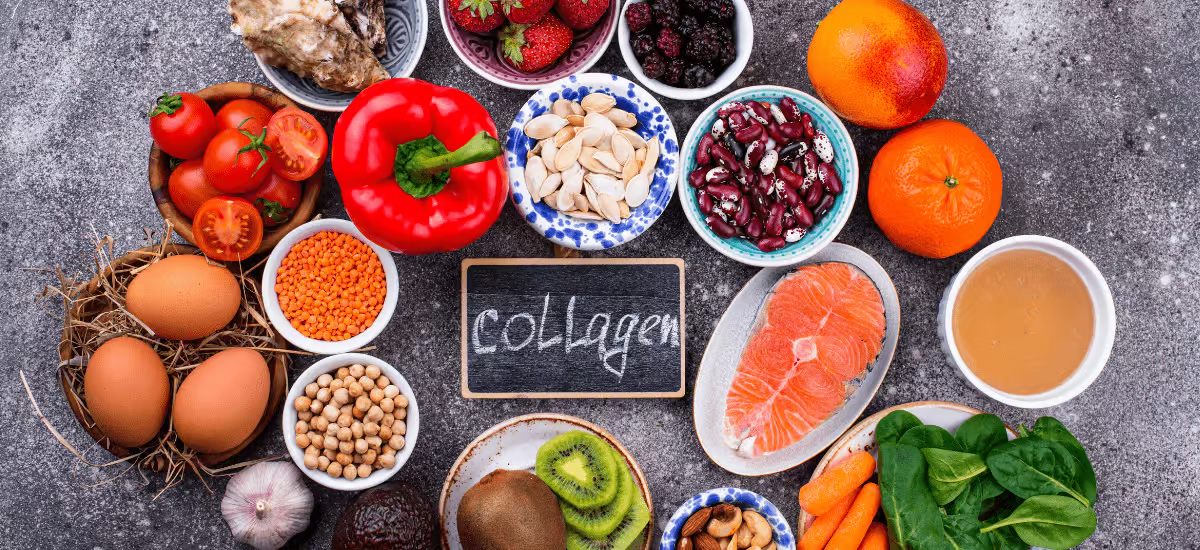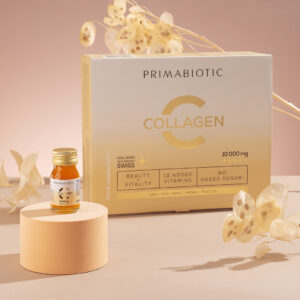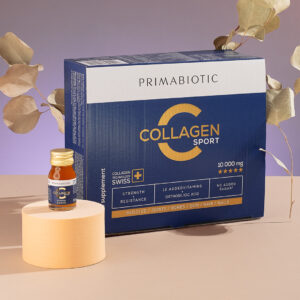
Collagen Rich Foods You Can Add To Your Diet
We have written about the effects of collagen on health and beauty many times before. The older we get, the less of that protein we produce, so we need to fill in the gaps with proper diet and supplementation. What are collagen-rich foods and what to remember when making a collagen menu?
Foods High in Collagen
According to the author of the book “The Collagen Diet: A 28-Day Plan for Sustained Weight Loss, Glowing Skin, Great Gut Health, and a Younger You” Josh Axe, inspiration for modern person should come from the diet of our ancestors.
“This inconspicuous protein was the basis of our ancestors’ diet, and that diet consisted of wild meat, broths, vegetables, berries, herbs and spices. In the days when food was scarce, people consumed every edible part of an animal. They cooked collagen-rich bone broth, tendons and fish cartilage, chicken and beef, and ate offal, ligaments and tendons regularly, all full of nutritious collagen. As it turns out, this attitude towards food may have given them protection against some of today’s common diseases.”
Today, consuming every part of an animal doesn’t seem right to us. However, we still reach for the salces, pork knuckles and jellies, although not everyone likes these types of products.
Collagen in Food – Where To Find It?
Sources of natural collagen:
- jellies – meaty, fruity and vegetable
- jelly fish,
- shanks,
- offal,
- aspic
These products are high in collagen. However, we should not base our entire diet on them – they contain a lot of fat and can lead to weight gain.
Foods That Boost Collagen – Collagen Broth
According to nutritionists, this is the best (and delicious) source of collagen. The broth contains valuable minerals and amino acids, which are necessary when we want to get rid of a virus infection faster, care to support digestive processes or fight leaky gut. However, a lot of patience is needed for its preparation – the broth must boil with pauses for as long as two or three days, so that all the valuable components are released.
Collagen broth is prepared from various fragments of chicken or pork meat with bone, water, vegetables (such as carrots, parsley, onions, celery), salt and spices (allspice, bay leaf). Meat quality is of great importance, and it is influenced by how the animals are raised and the type of food they receive. Foam that forms on the surface of the broth can contain harmful substances, so it should be disposed of regularly.
Vitamin C and Collagen
When creating a diet in which collagen-rich foods play an important role, we must not forget about vitamin C. Research has shown that it affects the synthesis of collagen, so they should be consumed together.
What Foods Are High in Vitamin C?
Where to find vitamin C? Here’s a list of foods you can incorporate into your menu:
- parsley
- cranberries
- broccoli
- green beans
- kale
- acai
- oranges
But are we able to replenish collagen deficiencies with diet alone? Unfortunately, it seems unlikely – we would have to eat large portions of the previously mentioned pork jelly every day, auszpik, cook broths on bones non-stop… Not only that not everyone likes the taste of meat jellies, but in addition, the products contain high levels of fat, so while they help for one thing, they can do harm to another….
The author of the book mentioned at the beginning notes that “An even simpler solution is to use supplements containing hydrolyzed collagen. This collagen undergoes a process called hydrolysis, and as a result, the long chains of amino acids are broken down into shorter ones. Studies show that such supplementation produces the same positive results as consuming normal collagen.”
In conclusion, let’s include collagen broth and (if one likes) other specialties from the above-mentioned list in the diet, but don’t forget that it’s a high-quality supplement with hydrolyzed protein that will help most effectively replenish deficiencies, and thus – improve our well-being and appearance.
How to Boost Collagen Naturally
Naturally boosting collagen production in the body can be achieved not only through diet, but also by incorporating various methods supported by scientific research. Here are a few of them:
Hyaluronic Acid (HA): Studies show that HA influences collagen synthesis in human dermal fibroblasts. A study published in the Journal of Dermatological Science found that exogenous HA increases collagen and total protein production in cultured human skin fibroblasts.
Red and Near-Infrared Light Therapy: Photobiomodulation using red and near-infrared light may stimulate the production of collagen and elastin, contributing to anti-ageing effects. A study published in Photomedicine and Laser Surgery demonstrated that the combination of these wavelengths enhances collagen and elastin synthesis.
Ginseng (Panax ginseng): Ginseng root extract may promote type I collagen synthesis in human skin fibroblasts. A study published in the Journal of Ethnopharmacology found that ginseng extract activates the COL1A2 gene promoter, leading to increased collagen production.
Aloe Vera: Applying aloe vera gel may enhance collagen content in granulation tissue and improve its cross-linking. A study published in the Journal of Ethnopharmacology showed that aloe vera increases both the collagen content and the degree of cross-linking in granulation tissue.
Retinol (Vitamin A): Using retinol may improve skin appearance by boosting collagen production. A study published in the Archives of Dermatology showed that topical application of retinol reduces fine lines associated with natural skin ageing, which is linked to the induction of glycosaminoglycans and increased collagen synthesis.
Incorporating these methods into your daily routine, alongside a healthy diet, can effectively support the body’s natural collagen production, contributing to improved skin elasticity and overall appearance.
See similar entries:

